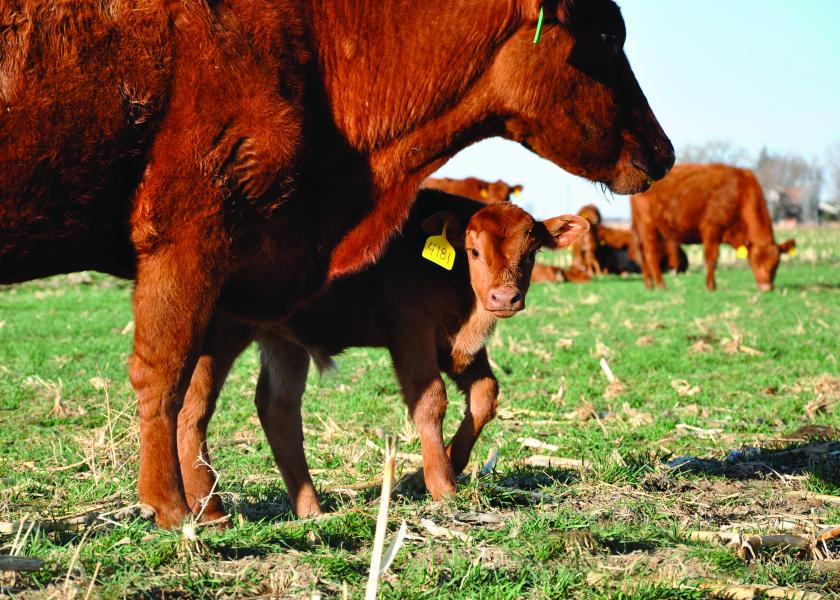Retained Ownership 2019

Each marketing year is different, and 2019 has certainly created some extreme challenges for cattlemen and grain producers alike. Interestingly, this year’s hurdles might have created new opportunities.
Many producers regularly retain ownership of their calves through the finishing phase. Those who do so know the genetic potential of their cattle and believe it’s the best strategy to capture premiums with superior performance and carcass genetics.
However, if you’re not already implementing a retained ownership program through the finishing phase, 2019 might not be a good year to start. That’s partly due to the added risk associated with this year’s higher grain prices, and partly because projected feedyard margins are tight through early next year.
“Cash cattle prices closed July with an average around $112 per cwt, and I project they could climb to the $125 level by January 2020,” says John Nalivka, president of Sterling Marketing. “My calculations suggest cattle placed on feed in August 2019, would have a breakeven of $116 per cwt. So, the potential margins are favorable, but I cannot overemphasize the risk posed by higher grain prices coupled with relatively high feeder cattle prices against that risk.”
In other words, further advances in grain prices could erase the favorable margins many analysts see for cattle marketed early next year. “The cattle market situation has changed signiffcantly (this summer), and it’s largely driven by what’s going on in the crop side,” says Oklahoma State University extension economist Derrell Peel. With corn and soybean planting reports showing fewer acres planted, “it’s very clear that we’re going to have lower yields. We’re going to have a smaller crop. We don’t yet know how small it will be. But inevitably it means that we’re going to see some higher feed prices.”
Those higher feed prices often raise the value of gain at the calf and stocker level.
“Obviously feedlots are probably looking at maybe locking in some feed prices at this point,” Peel says. “We’ve already had some run up, but there is still risk of some higher prices. For cow-calf producers it might translate into a potential for retaining ownership beyond weaning this fall.”
That strategy might be enhanced by the fact feeder cattle prices are generally lower than last year. For instance, three large annual video sales of western calves held in July saw prices for August 2019 delivered feeder cattle roughly $7 to $10 per cwt lower than 2018.
There’s also the reality that slightly larger supplies of feeder cattle will add more pressure to calf prices this fall. USDA’s mid-year cattle inventory report (released July 19, 2019) estimated the supply of feeder cattle and calves outside feedlots increased roughly 100,000 head.
That’s not a huge increase, and one that will be o set some by the fact this year’s calf crop was estimated to be down 100,000 head at 36.3 million. That number could be revised down further in future reports as winter storms likely caused major calf losses in many calf producing regions.
“Marketing plans for calf producers will be greatly influenced this year by the extreme weather,” Nalivka says. “Those producers who suffered heavy winter death losses may need to sell calves early for cash cow, which may not have been their original plan. On the other hand, the wet weather has provided the best pasture and range conditions we’ve seen in a generation in some regions. That will also influence marketing plans.”
Nalivka and other cattle market analysts note that in years when grain prices rise feedyards begin looking for heavier cattle.
Producers might find opportunities to keep their calves in a forage-based backgrounding program to add additional pounds and income. “The market may offer premiums for heavier cattle this fall,” Nalivka says. “And producers who have the forage resources may be rewarded for backgrounding those cattle for several weeks after weaning.”
That theory is echoed by Justin Sexten, vice president of strategy for Performance Livestock Analytics, who says, “When grain prices move higher, feedyards will look for heavier calves that will finish quicker on fewer days on feed. The market should reward those producers who precondition their calves and make them heavier on forage.”
Regardless of whether retaining ownership through a backgrounding or feeding program looks optimal, more producers will wean and precondition their calves this year. That is due to buyer resistance to unweaned calves and the price premiums paid for weaned and preconditioned calves.
Feedyard demand for weaned and preconditioned calves has spurred an increase in the number of auction markets implementing special sales for those calves. Premiums are already evident for calves raised under preconditioning programs, and now market forces might boost the demand for heavier feeders. One strategy to produce heavier feeders is to extend the weaning or backgrounding time.
Jason Smith, extension beef cattle specialist at the University of Tennessee, says the added weight can increase the potential returns from preconditioning. He suggests extending those backgrounding programs from 45 to 60 days. Keeping those calves on the same plane of nutrition often adds somewhere in the realm of 120 additional pounds of weight gain during that 60-day period.
“And we can expect that additional weight gain and value-added premium to add $150 to $200 in value per head,” Smith says. “If we focus on utilizing high-quality forages (pasture or harvested), an economical source of supplemental energy and protein, and a complementary mineral and vitamin supplement to do so, that will generally result in a $30-to-$50-perhead return over investment.”







